|
About ACSS
technology:
ACSS
(Audio-gd Current Signal System) technology is Audio-gd's signature
technology for transmitting audio signals in the current domain.
This concept, first seen in 1966, has been adapted by us for many
years. Since 2005, we have been evolving this technology to include
it into all audio signal transmissions in our systems from digital
source to power amplifier. Since 2006, ACSS technology became Audio-gd's
signature technology and gains a lot of popularity.
About NFB:
NFB means Non-FeedBack.
NFB-10SE uses the latest high-end ¡§Dual WM8741¡¨
which can support up to 32Bit/192KHz input. Similar to
other WM8741 designs, NFB-10SE applies Non-feedback ACSS output
stage. The ¡§Dual WM8741¡¨ feeds to the ACSS output stage without any
Operational Amplifier (OPA) so it can achieve very neutral sound.
The ACSS technology is a non-feedback technology made
with fully discrete amplifiers. Most people know that the global
feedback design offers better specifications in measurements than
non-feedback design. However, non-feedback design offers better
sound for human ears, which is a drawback of the conventional
circuits. But the ACSS technology opens a new era, it offers the
least coloration sound which is very neutral with very low
distortion and high linearity. It retains the dynamics, details and
neutrality but does not sound bright or harsh.
The output buffers are also non-feedback. In order to
maintain low impedance, we applied a diamond output stage which is
quite less colored than most conventional circuits.
The analog stage does not use couple cap to avoid
coloration.
The 32bit/192KHz USB interface outputs an I2S signal to
the ¡§Dual WM8741¡¨.
NFB-10SE applies the WM8805 as the SPDIF interface; its
sound characteristic is the same as the WM8741, which is detailed
and smooth and supports up to 192KHz. The WM8805 has quite low
jitter (50PS), which is much lower than the CS8416 (200PS). Users
can choose the DIR9001 module as the SPDIF interface instead of
WM8805. The replacement is very easy thanks to its modular design.
Real fully balanced discrete design.
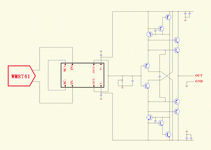 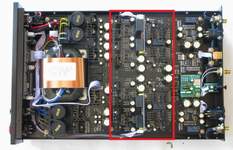
NFB-10SE
applies the excellent ¡§Dual WM8741¡¨ and excellent analog output
stages, but these are not the only key to the best sound. The power
supply is the most important. Even the best DA chip and the best
amplifier design have applied, if matched with an average power
supply, the resulting sound quality may still be musical but can't
be neutral and detailed. This is why it is easy to find that the
best neutral hi-end gears might not have the best chips or amplifier
stages, but with plenteous dedicated DC supply circuits.
NFB-10SE uses a high performance transformer. More than
38,000uf audio grade NOVER capacitors are used to ensure ample and
smooth power feed. The NOVER capacitors are specially custom made
from NOVER (U.K.) according to Audio GD's requirements.
NFB-10SE uses 7 groups of high-quality PSUs with dedicated
DC supplies. Digital and analog voltages each have isolated internal
power regulations.
The analog amplifier power supply is more important for
sound reproduction. In NFB-10SE, the +15V and -15V for the ACSS
analog stages are supplied by high speed discrete PSUs. They can
offer pure and quick power supply for driving headphones faithfully
with high S/N. The high voltage power supply can drive most
headphones ranging from 15 to 600 ohms as well.
To achieve high S/N, the control circuit is powered with
separate regulators.
Strong power supply.
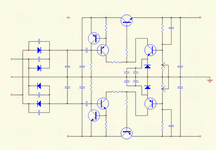
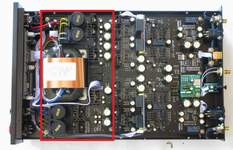
The I/V conversion
volume control without sound degradation:
Usually the volume control can be implemented in the DAC + amplifier
combo in two methods
Method 1: The
volume control is implemented into the digital stage. The major
drawback is that 1 bit of the D/A conversion is lost in every 6DB
volume reduction. So, even though the built-in DA chip is 32 bit, in
fact, only 16 bit may be left at low volume level.
Method 2: The
volume control is implemented in the analog amplifier input stage
through a volume pot to reduce the signal level. However, the volume
pot affects the sound quality adversely. A low grade volume pot
loses the details and creates channels imbalance resulting into
soundstage distortion. Even a high grade volume pot inevitably loses
the details. Both methods degrade the sound quality.
So, NFB-10SE
applies the I/V conversion volume control, the volume control is
just a variable passive I/V conversion being placed at the ACSS
amplifier output, where the output is current signal but not voltage
signal. I/V conversion is to change the volume level from the
current (I) signal to the voltage (V) signal. (Like R-2R D/A chips
output passive I/V conversion) It can keep the signal frequency band
flat while not losing any detail. It does not degrade the sound
quality in every volume level. In front of the volume control, there
are four groups of diamond non-feedback buffer output stages that
offer very low output impedance.
Mark Levinson
also knows that current volume control has great benefits, so in the
volume control of his top grade hi-end preamplifier No.32, he uses
many components to change the voltage (V) signal to current signal
(I), then through the R-2R network to control the volume, and
finally changes back to voltage signal (V) again. NFB-10SE simply
works in current (I) signal domain, and technically, it is superior
to the conventional technology due to less conversion.
The volume
control quality is much more important in a real balanced gear. It
must guarantee the signals of the four channels are exactly the same
to bring out the benefits of a real balanced gear. If the cold
signal and hot signal of a balanced gear are not exactly the same,
the balanced output will has a large distortion causing the sound
quality and performance even much worse than a single end gear. This
is a waste of a balanced design and the additional cost.
NFB-10SE
applies digitally controlled relay-based volume control in 96 steps.
It has 48 steps in both high gain and low gain mode to allow users
to control the volume level smoothly. NFB-10SE has two relay-based
volume control boards (totally four channels) through changing the
DALE resistors to control the volume to avoid channel imbalance,
achieving the best performance and sound quality of the gear.
Precise four-channel digitally controlled relay-based
volume control.
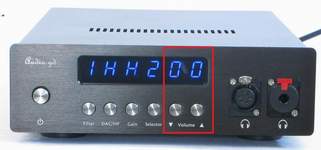
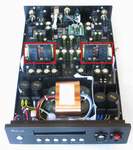
¡@ |

